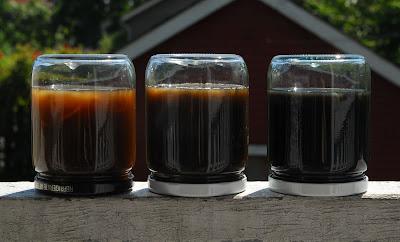My first sock had the "classic" hole in the heel - too much friction from the good ol' boots I wear all the time. Originally knitted with a sports weight yarn, I used a similar weight and colour to construct a weave across the hole. First by creating a "warp" section in one direction and then by weaving over and under all the warp threads.
My second sock - an all time favourite - wasn't too damaged, but the stitches over the heel were running super thin. Since I wanted to keep the pattern along the heel cup, Penny suggested that I cut right through the heel - something she's done a lot for toe repairs. A first for me ... it is with due diligence and trust in her experience that I cut a hole in my favourite sock! Afterwards, we brainstormed the best way to knit the heel back together and figured that short rows was going to do the trick.
I have one more sock to repair and it's been long time coming for this one. This pair was purchased in Kamchatka years ago and each stitch pretty much has a story ... so have the holes!
Starting October 1st, you can join Penny at the Urban Weaver Studio for a series of Woolley Workshops and rejoice at wearing your "new" mended socks.







